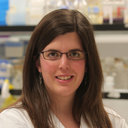Chemical composition of bioactive pressurized extracts of Romanian aromatic plants.
Maneno muhimu
Kikemikali
In this contribution, pressurized liquid extraction (PLE) has been employed to isolate bioactive compounds from three native Romanian plants, oregano (Origanum vulgare), tarragon (Artemisia dracunculus) and wild thyme (Thymus serpyllum). Different PLE conditions have been tested including extraction with water, ethanol and their mixtures in a wide range of extraction temperatures (50-200°C), and the antioxidant capacity of the extracts was measured using different assays (DPPH radical scavenging, TEAC assay and Folin-Ciocalteau assay to measure total phenols). Moreover, a complete chemical characterization by using LC-MS/MS was carried out to be able to correlate the bioactivity with the particular chemical composition of each extract and plant. The use of PLE with water as a solvent at the highest temperature tested (200°C) always provided the highest extraction yields for the three studied plants, being maximum for oregano (>60%). Besides, oregano's pressurized water extracts at lower temperatures (50°C) presented the highest content on total phenols (184.9 mg gallic acid/g extract) and the best antioxidant activities (EC(50) 6.98 μg/ml). In general, oregano extracts were the most active, followed by wild thyme extracts. The antioxidant capacity measured by DPPH assay was highly correlated with the amount of total phenols. Moreover, the use of a LC-MS/MS method allowed the identification of 30 different phenolic compounds in the different extracts, including phenolic acids, flavones, flavanones and flavonols, which have an important influence on the total antioxidant capacity of the different extracts.


